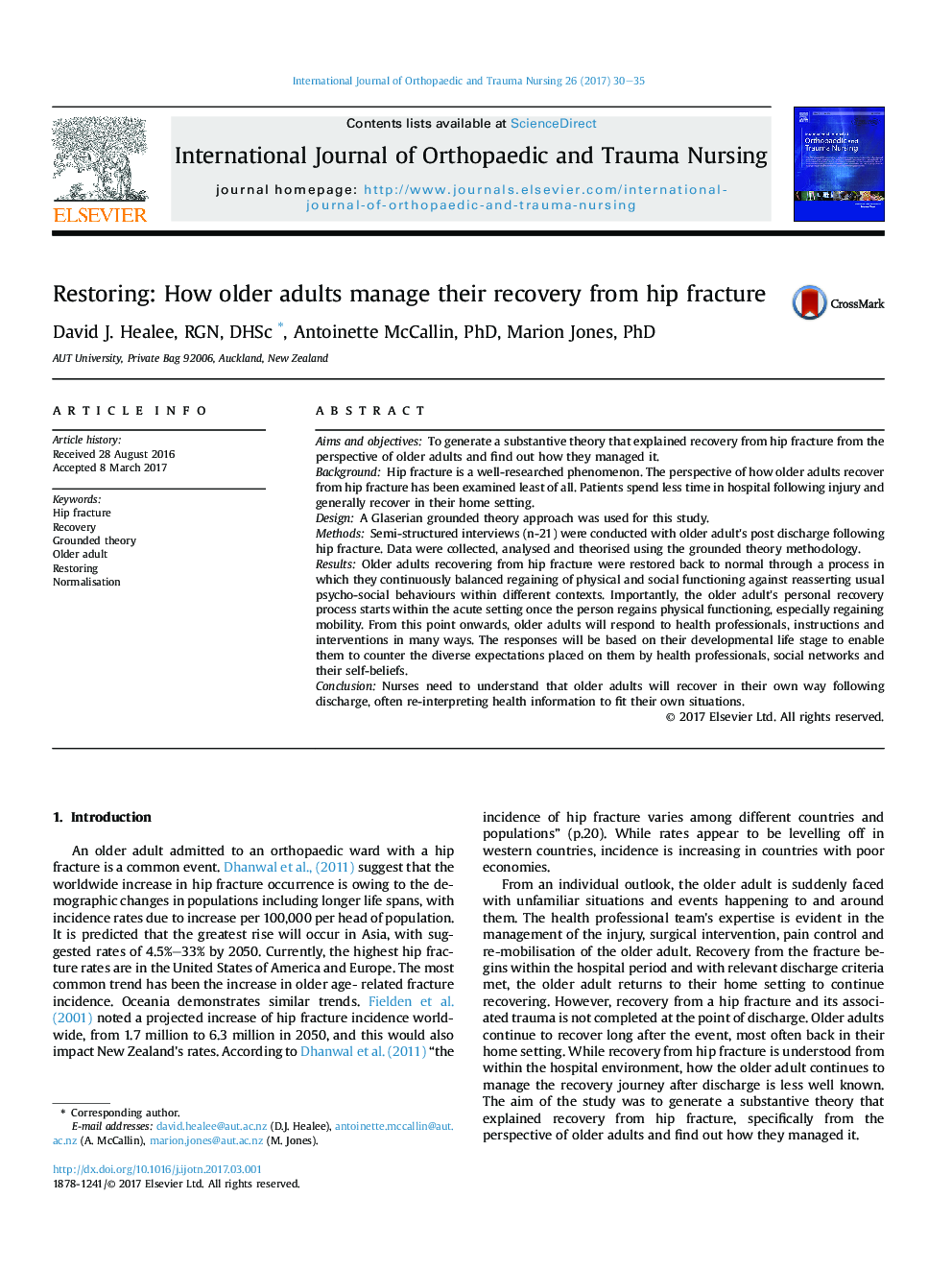| Article ID | Journal | Published Year | Pages | File Type |
|---|---|---|---|---|
| 5568429 | International Journal of Orthopaedic and Trauma Nursing | 2017 | 6 Pages |
Aims and objectivesTo generate a substantive theory that explained recovery from hip fracture from the perspective of older adults and find out how they managed it.BackgroundHip fracture is a well-researched phenomenon. The perspective of how older adults recover from hip fracture has been examined least of all. Patients spend less time in hospital following injury and generally recover in their home setting.DesignA Glaserian grounded theory approach was used for this study.MethodsSemi-structured interviews (n-21) were conducted with older adult's post discharge following hip fracture. Data were collected, analysed and theorised using the grounded theory methodology.ResultsOlder adults recovering from hip fracture were restored back to normal through a process in which they continuously balanced regaining of physical and social functioning against reasserting usual psycho-social behaviours within different contexts. Importantly, the older adult's personal recovery process starts within the acute setting once the person regains physical functioning, especially regaining mobility. From this point onwards, older adults will respond to health professionals, instructions and interventions in many ways. The responses will be based on their developmental life stage to enable them to counter the diverse expectations placed on them by health professionals, social networks and their self-beliefs.ConclusionNurses need to understand that older adults will recover in their own way following discharge, often re-interpreting health information to fit their own situations.
